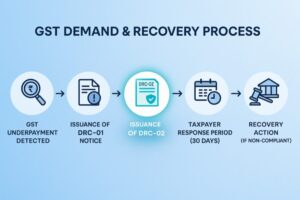AMB Charges, including GST, in India: Essential Tips
- 13 Aug 24
- 17 mins

AMB Charges, including GST, in India: Essential Tips
Key Takeaways
- AMB CHRG INCL GST Explained: This represents fees plus Goods and Services Tax for not maintaining the required bank account balance.
- Varied AMB Requirements: Banks set different minimum balance requirements; knowing yours is crucial.
- GST Increases Fees: The addition of GST to non-maintenance charges elevates the total fee.
- Important for Individuals: Understanding AMB charges aids in better financial management and fee avoidance.
- Crucial for Business: These fees impact business cash flow and operational budgeting significantly.
In today's financial landscape, understanding the nuances of various fees and taxes is crucial for both consumers and businesses. One term that often comes up is AMB CHRG INCL GST, which stands for Average Monthly Balance Charge Including Goods and Services Tax.
This concept is particularly important in the banking sector, where maintaining a certain balance in your account can directly affect the fees you might incur.
What Does AMB CHRG INCL GST Mean?

AMB CHRG INCL GST stands for "Average Monthly Balance Charge Including Goods and Services Tax." This term is primarily used in the banking sector to describe a specific type of fee that banks may charge their customers. Here's a breakdown of what it means:
- Average Monthly Balance (AMB): This refers to the average balance that a bank account holder is required to maintain in their account over a given period, usually calculated on a monthly basis. Banks set a minimum average balance requirement to ensure that accounts maintain a certain amount of funds. If the account balance falls below this minimum average, the bank may charge a fee.
- Charge (CHRG): This part of the term refers to the fee that is applied to the account if the account holder does not maintain the required minimum average monthly balance. The amount of this charge can vary depending on the bank's policies and the type of account.
- Including Goods and Services Tax (INCL GST): This indicates that the charge for not maintaining the minimum balance includes Goods and Services Tax (GST), a value-added tax levied on most goods and services sold for domestic consumption. In countries where GST is applicable, this tax is added to the base amount of the charge, making the total fee higher.
The Importance of AMB CHRG INCL GST

The importance of understanding the concept of AMB CHRG INCL GST (Average Monthly Balance Charge Including Goods and Services Tax) lies in its impact on both individual account holders and businesses that have bank accounts. Here’s why it’s important:
For Individual Account Holders
- Financial Management: Knowing about AMB charges helps individuals manage their bank accounts more effectively. By understanding the minimum balance requirements, account holders can avoid unnecessary fees, which, over time, can add up to a significant amount.
- Budget Planning: Awareness of potential fees, including GST, aids in better budget planning. Individuals can allocate their funds more wisely, ensuring that they meet minimum balance requirements and avoid charges that could otherwise be used for savings or other expenditures.
- Financial Literacy: Understanding these concepts contributes to overall financial literacy, empowering account holders to make informed decisions regarding their banking and financial strategies.
For Businesses
- Cash Flow Management: For businesses, especially small and medium-sized enterprises (SMEs), maintaining cash flow is critical. Knowing the implications of AMB CHRG INCL GST helps businesses manage their accounts more efficiently, ensuring that funds are allocated appropriately to avoid charges and maintain liquidity.
- Operational Costs: These charges can add up and become a significant operational cost if not managed properly. By understanding and planning for these charges, businesses can reduce overhead costs and improve their bottom line.
- Compliance and Financial Planning: Awareness and understanding of such charges, including GST, are crucial for compliance with local banking and tax regulations. Accurate financial planning and reporting requires taking these charges into account to avoid legal issues and ensure financial accuracy.
General Importance
- Economic Decisions: Both individuals and businesses can make more informed economic decisions by understanding the implications of AMB charges. This knowledge can influence how and where to deposit funds, choice of bank, and even the negotiation of terms with banks.
- Enhancing Customer-Bank Relationship: A clear understanding of charges, including AMB CHRG INCL GST, can lead to better communication and a more positive relationship between banks and their customers. When customers feel informed and treated fairly, they are more likely to remain loyal to their bank.
- Transparency and Trust: Understanding these fees also promotes transparency in the banking sector, which can build trust between financial institutions and their clients. It ensures that customers are aware of potential charges and understand their obligations, which can prevent disputes and dissatisfaction.
Calculating AMB CHRG INCL GST
To calculate the Average Monthly Balance (AMB) Charge Including Goods and Services Tax (GST) in Indian Rupees (₹), let's go through the steps with an example that uses the Indian financial context, where GST is often applied at a rate of 18%.
This example will guide you on how to calculate the charge if you don't maintain the required minimum average monthly balance in your bank account.
Step 1: Determine the Required Minimum AMB
Firstly, find out the minimum average monthly balance required by your bank. This is the average amount that needs to be maintained in your account over the course of a month. For example, let's say the required AMB is ₹10,000.
Step 2: Calculate Your Actual AMB for the Month
Calculate your actual AMB by adding the daily balances for each day of the month and then dividing by the number of days in that month. Suppose your actual AMB comes out to be ₹8,000.
Step 3: Calculate the Shortfall
Subtract your actual AMB from the required AMB to find the shortfall. In our example, the shortfall would be ₹10,000 - ₹8,000 = ₹2,000.
Step 4: Determine the Base AMB Charge
Suppose your bank charges a base fee of ₹50 for every ₹1,000 or part thereof by which the account falls short of the required AMB. Therefore, for a shortfall of ₹2,000, the base AMB charge would be ₹100.
Step 5: Calculate the GST on the Base AMB Charge
Apply the GST rate to the base AMB charge to calculate the GST amount. Assuming the GST rate is 18%, the GST on the base charge would be calculated as follows:
GST Amount=₹100×0.18=₹18GST Amount=₹100×0.18=₹18
Step 6: Calculate the Total AMB Charge, Including GST
Add the GST amount to the base AMB charge to get the total AMB charge, including GST:
Total AMB CHRG INCL GST=₹100+₹18=₹118Total AMB CHRG INCL GST=₹100+₹18=₹118
- Example Summary:
- Required AMB: ₹10,000
- Actual AMB: ₹8,000
- Shortfall: ₹2,000
- Base AMB Charge: ₹100
- GST Rate: 18%
- GST Amount: ₹18
- Total AMB CHRG INCL GST: ₹118
This example shows how to calculate the total AMB charge, including GST, in Indian rupees when an account does not maintain the required minimum average balance. It's crucial to check with your specific bank for the exact AMB requirements, base charges, and GST application, as these can vary between banks.
Dealing AMB CHRG INCL GST for Businesses

Dealing the complexities of average monthly balance (AMB) charges, inclusive of Goods and Services Tax (GST), is crucial for businesses aiming to maintain financial health and compliance.
Understanding and managing these invoices can help in avoiding unnecessary fees, ensuring better cash flow management, and optimizing operational costs.
Here are strategies and insights for businesses to effectively navigate AMB charges, including GST:
- Understand the Terms and Conditions
- Familiarize with Bank Policies: Different banks have varying policies regarding AMB requirements. It’s essential to understand these specifics to avoid penalties.
- GST Implications: Recognize that AMB charges are subject to GST, which increases the cost. Knowing the exact rate applied in your region (e.g., 18% in India) helps in accurate financial planning.
Monitor Accounts Regularly
- Use Digital Banking Tools: Leverage online banking platforms for real-time monitoring of account balances. This can help in taking timely actions to maintain the required AMB.
- Set Alerts: Many banks offer alert services for low balances. Enroll in these services to get notified and act promptly to avoid charges.
Optimize Cash Management
- Strategic Fund Allocation: Allocate funds strategically across accounts to meet AMB requirements without hindering cash flow for operational needs.
- Sweep-in and Sweep-out Facilities: Consider using sweep accounts that automatically manage your balances across linked accounts to ensure AMB requirements are met.
Negotiate with Your Bank
- Banking Relationship: A strong relationship with your bank can provide leverage to negotiate better terms for AMB charges or waivers based on your banking history.
- Customized Banking Solutions: Banks may offer customized solutions or accounts with more favorable AMB terms for businesses, depending on your transaction volume and banking needs.
Plan for GST on Banking Charges
- Budget for GST: When budgeting for banking charges, include the GST to get a realistic view of financial obligations.
- Tax Credit Opportunities: Understand how to claim input tax credits for the GST paid on banking services, which can offset other GST liabilities.
Educate Your Team
- Training on Financial Management: Ensure that team members responsible for managing company accounts are aware of the implications of AMB and GST.
- Regular Reviews: Implement a routine for regular review of bank statements and prices by your finance team to catch any discrepancies early.
Leverage Technology for Financial Efficiency
- Integrate Banking with Accounting Software: Automate the tracking of balances and transactions to reduce manual errors and enhance efficiency.
- Financial Analysis Tools: Use tools that can help forecast cash flow and analyze the best strategies to maintain required AMBs.
Consider Alternative Banking Options
- Research Other Banks: Market conditions change, and other banks might offer more competitive AMB terms. Regularly assess the market to ensure you're getting the best deal.
- Non-traditional Banking Services: Explore fintech options that might provide more flexible solutions for business banking without stringent AMB requirements.
The Future of AMB CHRG INCL GST
The future of Average Monthly Balance (AMB) charges, including Goods and Services Tax (GST), is likely to evolve with changing banking regulations, technological advancements, and shifting customer expectations. Here are some trends and predictions that could shape the future of these prices:
- Increased Transparency and Customer Education
Banks may move towards greater transparency regarding AMB charges and the inclusion of GST. This could involve clearer communication, detailed breakdowns of fees, and educational initiatives to help customers understand how to manage their accounts to avoid fees.
Enhanced transparency can lead to improved customer service and trust in financial institutions.
- Technological Innovations
The rise of fintech and digital banking solutions is set to continue, offering more sophisticated tools for account management. These technologies may include predictive analytics to forecast potential balance shortfalls and automated tools to manage funds across accounts efficiently, thus avoiding AMB charges.
Furthermore, blockchain technology could introduce more secure and transparent ways to track and manage account balances in real-time.
- Personalized Banking Services
As data analytics become more advanced, banks might offer more personalized banking services tailored to individual business needs. This customization could extend to AMB requirements and charges, where businesses may have the option to negotiate terms based on their banking history, cash flow patterns, and financial health.
Personalized services could help businesses optimize their cash management and reduce unnecessary expenses.
- Regulatory Changes
There could be regulatory changes impacting how AMB charges and how GST is applied to these prices. Regulators may introduce guidelines to ensure that these prices are fair, especially for small and medium-sized enterprises (SMEs) that may be disproportionately affected.
Changes could include caps on prices, adjustments to GST rates, or more flexible AMB requirements.
- Adoption of Non-Traditional Banking
The future may see a further shift towards non-traditional banking services, such as fintech and neobanks, which often offer more flexible account options with lower or no AMB.
These digital-first alternatives could pressure traditional banks to adapt their fee structures to remain competitive, potentially leading to reduced AMB charges and more favorable terms for businesses.
- Enhanced Customer Support and Advisory Services
Banks may enhance their support and advisory services to help businesses navigate AMB and GST implications. This could include dedicated advisors for business accounts, online resources, and tools to help companies manage their finances better, plan for tax implications, and ultimately reduce or avoid AMB charges.
- Integration with Business Software
Integration between bank accounts and business financial software is likely to become more seamless. This integration can help businesses better manage their cash flow, predict future balances, and take proactive steps to maintain required balances, thereby minimizing or avoiding AMB fees.
Key Points About AMB Non-Maintenance Charges:
- Charge Structure: The specific amount of non-maintenance fees can vary widely among different banks and types of accounts. Banks typically have a tiered structure for these fees, meaning the less the AMB is maintained compared to the required minimum, the higher the fees that could be levied.
- Inclusion of GST: In addition to the base charges for not maintaining the AMB, banks also apply Goods and Services Tax (GST) to these fees, increasing the total amount that will be deducted from the account holder's balance. The current rate that the government has set determines the GST applied.
- Calculation Period: AMB non-maintenance charges are not applied daily but are usually assessed based on the average balance maintained over a specific period, typically a month. This allows for flexibility, as account balances can fluctuate daily.
- Notification: Many banks provide alerts or notifications if your account balance falls below the required AMB, giving you a chance to deposit funds and avoid the fees. These alerts can be received via SMS, email, or through the bank's mobile app.
- Waivers and Exceptions: Some banks offer waivers on AMB non-maintenance charges for a certain period or under specific conditions, such as linking a salary account or maintaining a fixed deposit of a certain amount. It's worthwhile to inquire about these options.
- Transparency: Banks are required to clearly communicate their AMB requirements and the corresponding non-maintenance charges to their customers. This information is typically available in the account opening documents, the bank’s website, and through customer service channels.
Impact on Customers:
Non-maintenance charges can deplete your account balance, especially if you're unaware of the fees or the specific AMB requirement. It's crucial to understand these fees and manage your account accordingly to avoid unnecessary fees.
Strategies to avoid AMB charges:

- Regular Monitoring: Keep a close eye on your account balance and track your average monthly balance throughout the month.
- Setting Alerts: Utilize your bank's alert services to get notified when your balance drops below a certain level.
- Choosing the Right Account: Select a bank account with AMB requirements that match your banking habits and financial capacity.
- Utilizing Waivers: Take advantage of any waivers or exceptions offered by your bank to reduce or avoid non-maintenance charges.
Conclusion
The concept of AMB CHRG INCL GST is crucial for both individual account holders and businesses to navigate the banking landscape effectively. This understanding not only promotes the avoidance of unnecessary spending but also enhances financial literacy, budgeting, and management as a whole.
Businesses must also adhere to banking and tax regulations, in addition to managing cash flow and operational expenses. In conjunction with strategic financial planning, proactive and conscientious administration of your bank accounts may aid you in making more prudent financial decisions and fostering stronger relationships with your banks.
In the end, anticipating discrepancies in your banking activities and maximizing your financial resources requires that you be well-informed regarding AMB requirements and the influence of GST on these fees.
💡Learn more about how our Pice can help you make all your important business payments, like supplier and vendor payments, rent, GST, & utility, from one single dashboard with your credit card. Request a demo now.
 By
By 
















